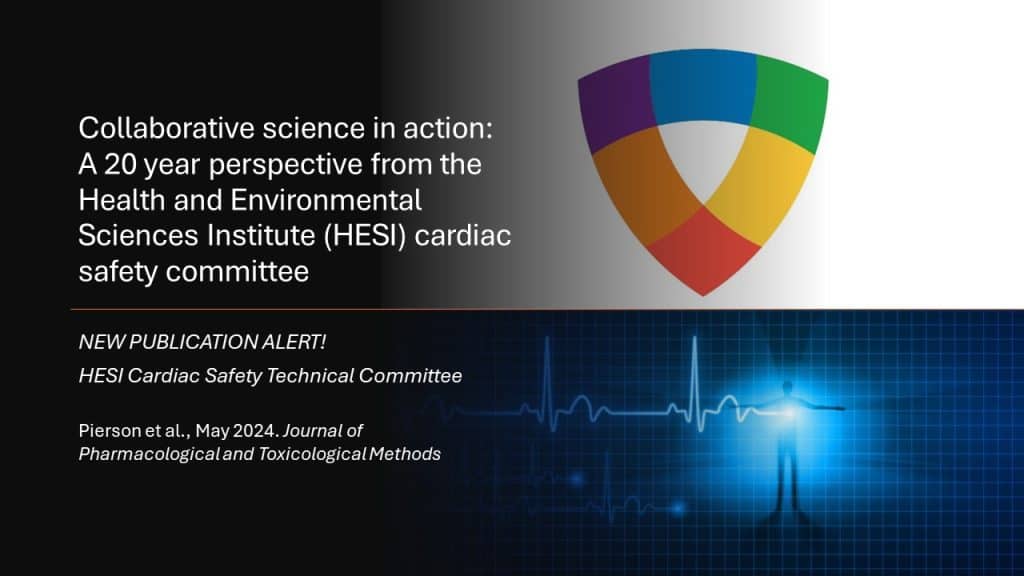Collaborative science in action: A 20 year perspective from the Health and Environmental Sciences Institute (HESI) cardiac safety committee
- Publication Date :
- Publication Type : Journal Article
- Author(s) : Pierson et al.
- Journal Name : Journal of Pharmacological and Toxicological Methods
 The Health and Environmental Sciences Institute (HESI) Cardiac Safety Technical Committee (CSTC) has made significant strides in improving cardiovascular (CV) safety in drug development. Here are the top 5 takeaways from their collaborative efforts:
The Health and Environmental Sciences Institute (HESI) Cardiac Safety Technical Committee (CSTC) has made significant strides in improving cardiovascular (CV) safety in drug development. Here are the top 5 takeaways from their collaborative efforts:
- Collaborative Science: The CSTC brings together experts from academia, regulatory authorities, and the private sector to address CV safety challenges through research, studies, workshops, and symposia.
- Detection and Prediction: The CSTC utilizes innovative models to detect potential cardiac failure modes and improve study design, enhancing the translational predictability of nonclinical evaluations.
- Published Impact: The CSTC has published 38 peer-reviewed manuscripts, showcasing their contributions to the field of CV safety and advancing the development of safer medicines.
- Addressing Adverse Effects: By reducing unanticipated adverse drug effects, the CSTC aims to minimize attrition in drug development and withdrawal of marketed drugs, benefiting both patients and pharmaceutical companies.
- Future Opportunities: The CSTC's work extends beyond drug development, providing insights into the impact of environmental or chemical exposures on cardiovascular function.
Read the full publication here: https://doi.org/10.1016/j.vascn.2024.107511